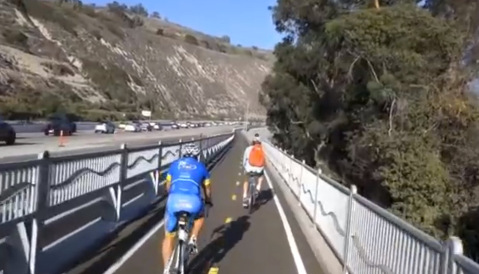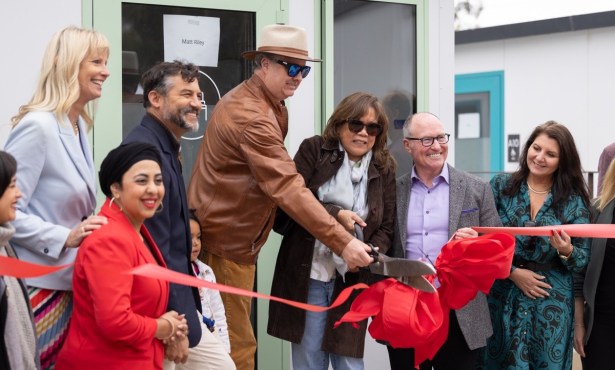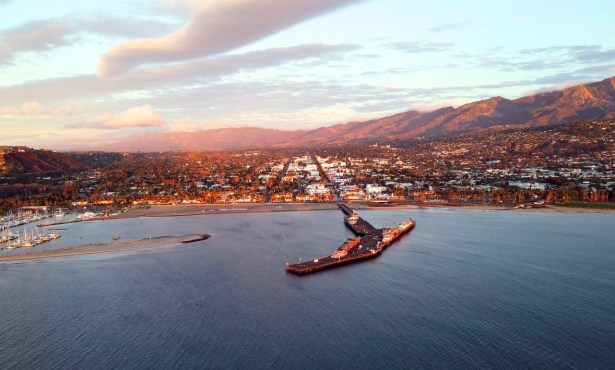Pedaling Safely in Our Communities
Increased Road Safety Protects Bikes and Cars
One … Two … Three … Hurrah!! We’re making South Coast roads safer for all road users. Both Goleta and Santa Barbara have recently been awarded Active Transportation Grants for bicycling and pedestrian improvements. Making roads safer for cyclists and pedestrians makes them safer for cars, buses, trucks, and motorcyclists. South Coast cyclists also celebrated the opening of the Rincon-Mussel Shoals Bikeway. Three victories to celebrate for all road users!

Thanks to Caltrans District 7, Ventura County, SBCAG, and the Coastal Commission, for the first time in over 50 years, cyclists won’t have to ride on the 101 to get from Ventura to Santa Barbara. The Rincon bikeway is a perfect example of how we can build needed bikeway infrastructure to complete the coastal route and Connect Our Community. Six years ago, Ventura County and Caltrans first met to plan the widening of 101 south of Rincon. The Santa Barbara Bicycle Coalition and its president emeritus, the late Ralph Fertig, saw an opportunity to close a long-standing gap in the California Coastal Route that forced cyclists to ride on the freeway shoulder. What was once three miles of terrifying cycling, with 18-wheelers whizzing by at 60 miles per hour, is now a beautiful ocean bike path.
The City of Santa Barbara has received $8.6 million dollars in funding from the State of California for four transportation projects aimed at bicyclists and pedestrians. These Active Transportation Program projects will focus on Eastside road improvements. The work includes replacing the Montecito Street Bridge with one that will include a sidewalk. The second project is the new Cacique/Soledad Streets Pedestrian/Bicycle Bridges and Lighting over Sycamore Creek. The last Eastside project will be new sidewalks on Milpas Street from the railroad tracks to where the street dead-ends at the ocean.
The final project is design work for a bike path on Las Positas and Modoc Roads. The Las Positas Project was a key component of the 1998 Bicycle Master Plan. The multi-purpose pathway would extend from Cliff Drive north to Modoc Road along Las Positas Road and west along Modoc Road, connecting to the Obern Trail.
The City of Goleta is celebrating the award of $3.6 million for two Active Transportation Program projects. Goleta received funding for the Hollister Avenue Class I Bike Path Safe Routes to School Project and the Ekwill Street and Fowler Road Extensions Project – Bicycle/Pedestrian Improvements Project.
The $1.6 million Hollister Class 1 Bike Path Project is a Safe Route to Schools Project that will build a bike path from Pacific Oaks Drive west to Ellwood School. The project will be constructed in summer 2015 and provide increased safety for students walking and bicycling to school. Hollister Avenue will still have four lanes of travel with a center left-turn lane. The Ekwill Fowler Bicycle and Pedestrian Improvement Project received $2 million for constructing sidewalks and Class II bike lanes for the Ekwill Street and Fowler Road Extensions Project. Construction is expected to begin in late 2015. Considering that the Complete Streets program would require a bike lane and sidewalks on this new street, effectively the money is really for road improvements that benefit motorists.
Every resident of Santa Barbara, Goleta, and Carpinteria should be thrilled by these three road infrastructure improvements. A study by the UNC Research Foundation in 2013 found that “Building a new roadway for automobiles can cost tens of millions of dollars to construct, and many of the pedestrian and bicycle infrastructure projects and facilities are extremely low-cost in comparison. This infrastructure can also serve to improve safety for all road users, while also promoting healthier lifestyles through more bicycling and walking.“ The key point from that statement is that the improvements were for all road users including cars. The 2011 Sustainable Streets Index, published by New York City’s Department of Transportation, reiterates this point, “improvements such as pedestrian islands and bicycle paths led to an overall reduction in motorist crashes as well as injury crashes, a decrease in speeding, and an increase in pedestrian and bicycle activities.”
If that’s the case, then why do we still engage in public discussion that casts the debate as “us versus them”? I may be missing something, but we should be framing the community conversation as cars and bikes. We shouldn’t be using Leviticus 19:19 to guide our debate: “Thou shalt not let thy cattle gender with a diverse kind: thou shalt not sow thy field with mingled seed: neither shall a garment mingled of linen and woollen come upon thee.” If we’re okay with cotton/polyester-blend shirts, then we can certainly mingle cars and bicycles on our roads.
Ed France, the executive director of SBBIKE has it right: “The question isn’t ‘bikes over cars,’ but rather, what is the right tool for the job?” When I needed to go to Urgi-Care last winter I used a car. My car is still the best way to pick up plants at Island Seed and Feed or lumber at Ace Hardware, or to visit my cousin in Thousand Oaks. If I’m picking up a book at the library, commuting to work, visiting friends in San Roque, meditating at the beach, or stopping for a beer downtown, I’ll take my bicycle.
According to a recent survey, nearly nine out of 10 bicyclists in Oregon and southwest Washington also own and drive automobiles. That would be consistent with my own informal survey of Santa Barbara cyclists. Only a small portion of Santa Barbarians are commuting to work every day by bike, but many of them cycle to the beach on a weekend or go for frozen yogurt on State Street with their family. City leaders need to help make our roads safer for cyclists of all ages. By doing so they’ll also make them safer for all road users. Win-win!


